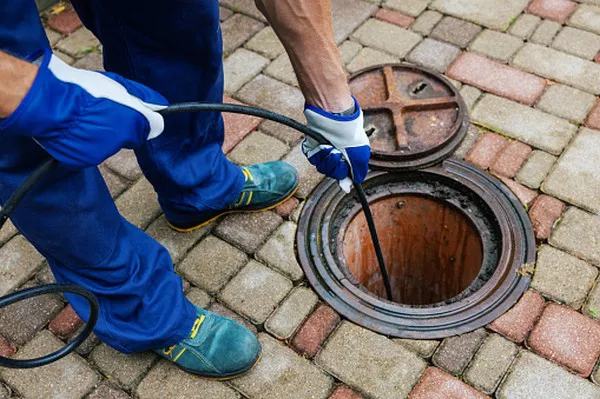In the realm of wastewater treatment, aerobic treatment systems represent a pivotal technology that facilitates efficient and environmentally sound disposal of wastewater. Unlike traditional septic systems that rely on anaerobic processes, aerobic treatment systems harness oxygen to break down organic matter more thoroughly. This results in significantly cleaner effluent, which is essential for protecting both human health and the environment.
What is an Aerobic Treatment System?
An aerobic treatment system, often referred to as an aerobic septic system or aerated wastewater treatment system, operates on the principle of using oxygen to promote the growth of aerobic bacteria. These bacteria thrive in oxygen-rich environments and are highly effective at decomposing organic materials present in wastewater. By contrast, anaerobic systems rely on bacteria that operate in environments devoid of oxygen, leading to less efficient breakdown of organic matter and potentially producing odorous byproducts like hydrogen sulfide.
Components of an Aerobic Treatment System
A typical aerobic treatment system comprises several key components:
Treatment Tank: This tank holds the wastewater temporarily to allow aerobic bacteria to degrade organic matter. It is equipped with mechanisms to introduce oxygen into the system, promoting aerobic conditions.
Aeration System: Vital to the system, this component introduces air into the treatment tank. The air can be supplied through various means such as diffusers, which release fine bubbles into the wastewater, maximizing the surface area for oxygen transfer.
Settling Chamber: After the aerobic bacteria have consumed the organic matter, the effluent enters a settling chamber where solids settle to the bottom as sludge, and clearer water rises to the top.
Chlorination Chamber (Optional): Some aerobic treatment systems include a chlorination chamber to further disinfect the effluent before it is discharged into the soil or a receiving water body.
Effluent Filter: Before leaving the system, the effluent passes through a filter to remove any remaining particles, ensuring that only clear, treated water exits the system.
Pump (if needed): In systems where the drain field is situated higher than the treatment tank, a pump may be necessary to lift the treated effluent to the drain field for final dispersal.
How Does an Aerobic Treatment System Work?
The operation of an aerobic treatment system can be summarized in several straightforward steps:
Wastewater Entry: Wastewater from the household plumbing enters the treatment tank, where the process begins.
Aeration: Air is continuously supplied to the treatment tank, either through a mechanical aerator or by natural means such as surface agitation. This creates an aerobic environment that encourages the growth of aerobic bacteria.
Organic Matter Breakdown: Aerobic bacteria present in the treatment tank metabolize organic matter, breaking it down into simpler substances such as carbon dioxide and water. This process is more efficient and faster compared to anaerobic decomposition.
Settling: Treated wastewater then moves into a settling chamber where solid particles settle to the bottom as sludge, and clearer water rises to the top.
Disinfection (if applicable): In systems equipped with a chlorination chamber, the effluent undergoes further treatment to eliminate harmful pathogens.
Filtration: Before leaving the system, the effluent passes through a filter to remove any remaining suspended solids, ensuring that only clear, treated water is discharged.
Effluent Discharge: The final step involves the effluent being dispersed into the drain field or another approved dispersal area. Here, the treated water infiltrates into the soil, undergoing further natural purification processes.
Advantages of Aerobic Treatment Systems
Aerobic treatment systems offer several distinct advantages over traditional septic systems:
Effluent Quality: They produce higher quality effluent due to more thorough treatment, which reduces the risk of groundwater contamination and potential health hazards.
Versatility: These systems can be used in various soil types and topographies, making them adaptable to different geographical regions.
Reduced Odors: Unlike anaerobic systems that can produce foul odors, aerobic treatment systems produce minimal to no odors because aerobic bacteria do not generate hydrogen sulfide.
Compact Design: They generally have a smaller footprint than anaerobic systems, making them suitable for properties with limited space.
Lower Environmental Impact: By treating wastewater more effectively, these systems help protect local water bodies and ecosystems from pollution.
Considerations for Installation and Maintenance
While aerobic treatment systems offer significant benefits, proper installation, operation, and maintenance are crucial to their effectiveness and longevity:
Site Evaluation: A thorough assessment of soil conditions and site characteristics is essential to ensure proper installation and optimal performance.
Regular Maintenance: Routine maintenance, including periodic inspections, sludge removal, and checking the aeration system, is necessary to keep the system operating efficiently.
Monitoring: Monitoring the quality of effluent and ensuring compliance with local regulations are essential responsibilities of system owners.
Professional Service: Engaging qualified professionals for installation and maintenance tasks can help prevent issues and ensure compliance with local regulations.
See Also What Is The Purpose Of Tertiary Wastewater Treatment
Conclusion
In conclusion, aerobic treatment systems represent a significant advancement in wastewater treatment technology, offering efficient and environmentally sustainable solutions for managing residential and commercial wastewater. By harnessing the power of aerobic bacteria, these systems produce cleaner effluent while minimizing environmental impact and protecting public health. As the need for effective wastewater management continues to grow, aerobic treatment systems stand out as a reliable and adaptable option for communities worldwide.
You Might Be Interested In

